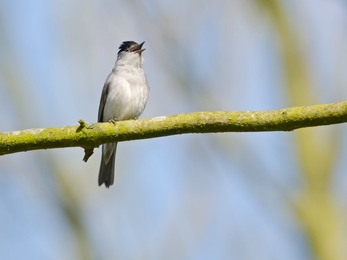Warblers are on the move, with young blackcaps, chiffchaffs and whitethroats all on the hunt for food in the Great Fen. Our bird monitoring, such as bird ringing, is recording large numbers of juvenile birds for each of these species this year, an encouraging sign. Elderberries are a well know menu item for blackcaps. In some cases, only a few berries have ripened so far in some places. Elsewhere, they are quite advanced, much to the benefit of this species of warbler.
Grey partridge have been spotted with young in recent weeks, all capable of flying now, Other species, such as the cuckoo, have already left us. Earlier in the month we spotted the usual congregations on the powerlines, signalling the end of their stay with us; when was the last sight or sound you had of cuckoo at the Great Fen this year? On your walks around the Fen, you may spot young (juvenile) birds, and we'd be interested to have your sightings. Right now you might spot juvenile stonechats, or even a young wheatear. This raises an interesting point for this time of year, which birds were born in the Fen, and which ones are just moving through now?
In the wetlands, birds are still fledging and while some juveniles have already dispersed, others are taking to the wing for the first time; you will hear their calls coming from the vegetation. Some birds are still singing, and we currently still have grasshopper warblers on our restoration land, producing their insect-like reeling song. Check out this link, for a video of one singing.
At this time of year the common reed is magnificent, towering above you, and this late flowering grass is joined by some other iconic 'Great Fen' species. On the ditch edges you may also encounter the statuesque marsh sow thistle, with its spear-shaped leaves and small yellow dandelion-like flowers. Purple-loosestrife is also in flower, one of my favourites, adding an impressive splash of bright purple to the waterside. Look out for hemp-agrimony as well, a great source of nectar, often attracting lots of insects day and night.











